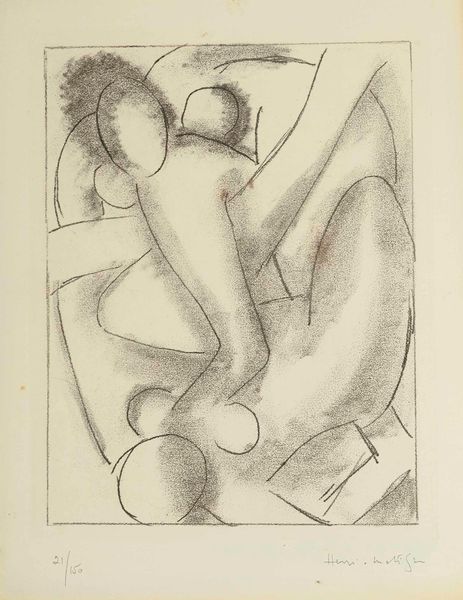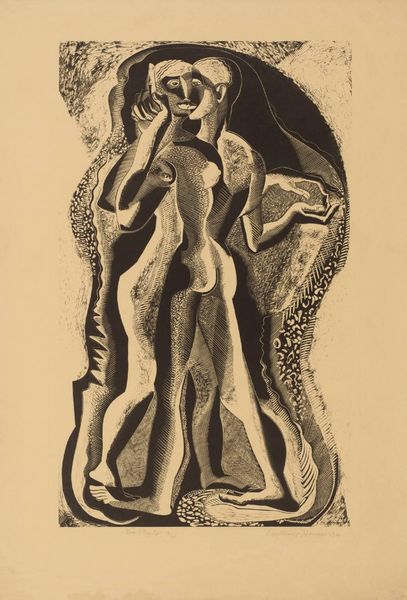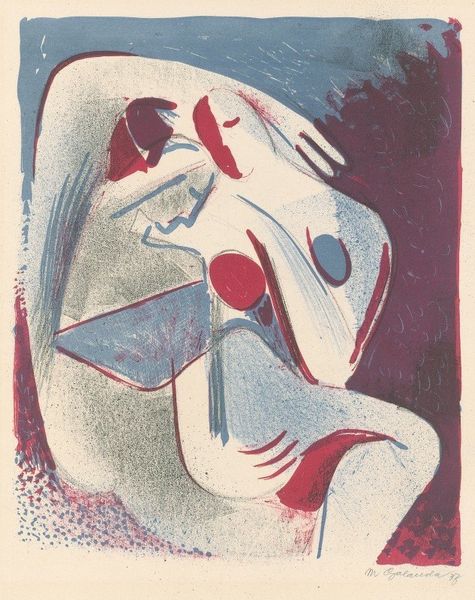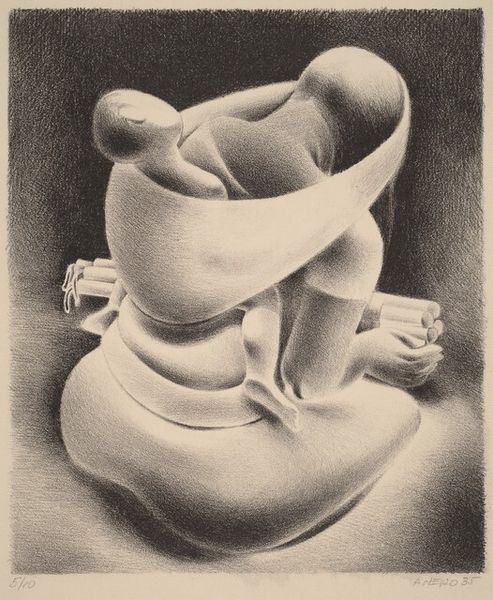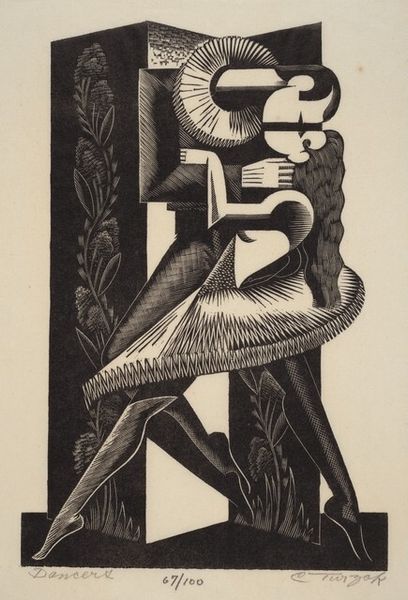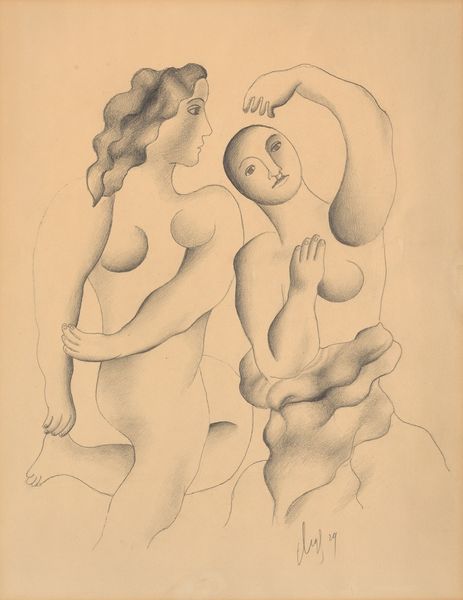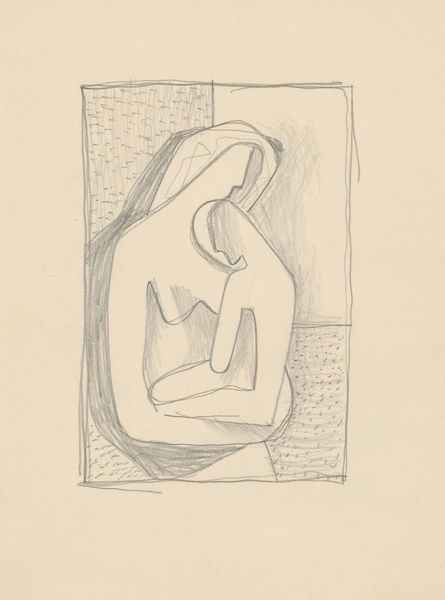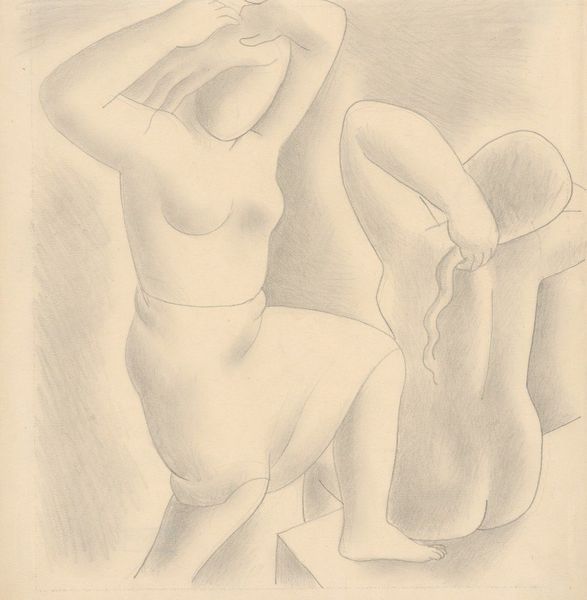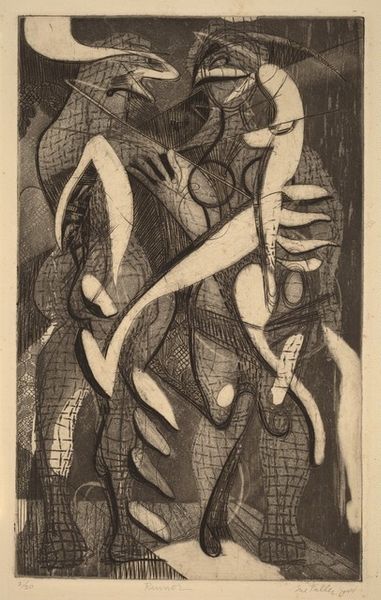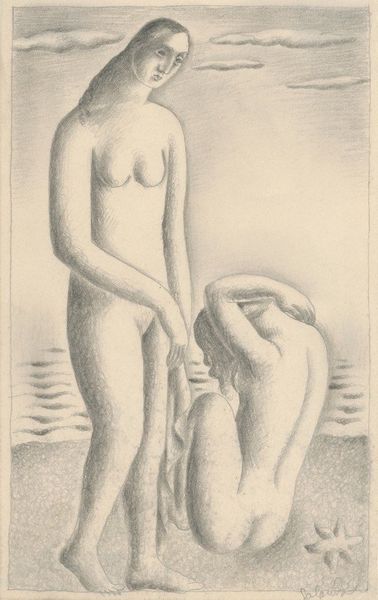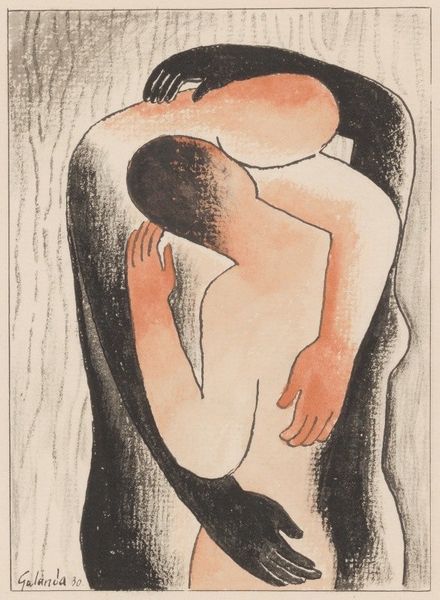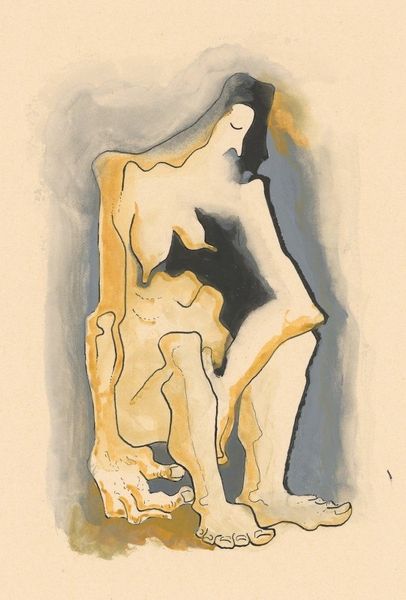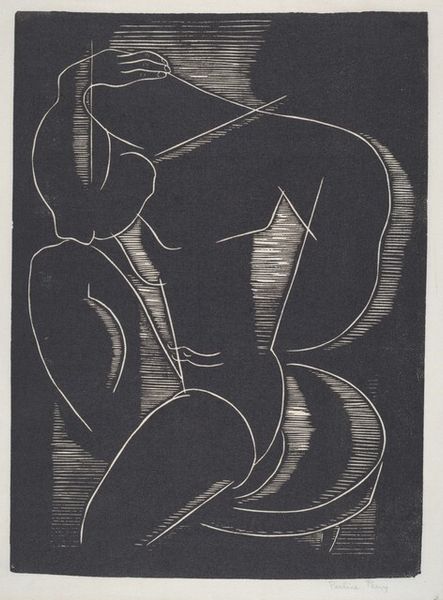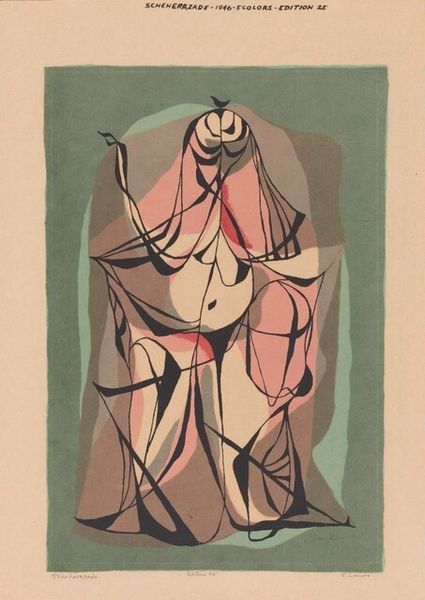
drawing, pencil
#
drawing
#
caricature
#
figuration
#
abstract
#
form
#
pencil drawing
#
pencil
#
geometric-abstraction
#
abstraction
#
line
#
modernism
Copyright: Public Domain: Artvee
Curator: Mikuláš Galanda created "Melancholy Highwaymen" sometime between 1935 and 1936. It's a drawing using pencil to explore figuration and geometric abstraction. My first thought is that the figures emanate stillness despite their unusual construction, with each sharp contour balanced by a soft melancholy, as if resigned to some inescapable destiny. Editor: The mood definitely hits you first. It feels like we're observing people trapped in an oppressive structure, maybe reflective of social or political forces at play. Curator: Perhaps. I read it more as an exploration of inner states reflected through external forms. Galanda simplifies the human form, reducing figures to geometric blocks, almost archetypes. What do you think the presence of such stylization does to their perceived emotional impact? Editor: I think that it forces us to read their affect through pose and relation, and that pose indicates dejection. By abstracting them, Galanda universalizes their sadness. It doesn't depict one specific experience of sorrow; rather, sorrow is imposed structurally upon them, which implicates forces much larger than individual experience. There is something unsettling about seeing humans turned into monuments of their grief. Curator: The repetitive, hatching of pencil strokes and choice of reddish-brown hues may be interpreted through that symbolic system, invoking images of earthy limitations—of boundaries and inescapable material reality—while hinting toward the passion bound in grief. What resonates for me is how Galanda imbues these seemingly simple lines with such enduring gravity. Editor: What’s interesting is that Galanda made this during a time of political turmoil, when fascism was rising and oppressive political and economic conditions were becoming more restrictive across Europe. In this light, these melancholy figures become reflections of powerlessness against systemic oppression. Curator: The title becomes all the more significant when paired with such context! And it reminds us of art's incredible ability to hold and transmit coded memories. Editor: Right. That melancholic mood carries the historical weight of powerlessness and resistance. Perhaps that’s why these figures resonate so powerfully even today.
Comments
No comments
Be the first to comment and join the conversation on the ultimate creative platform.
